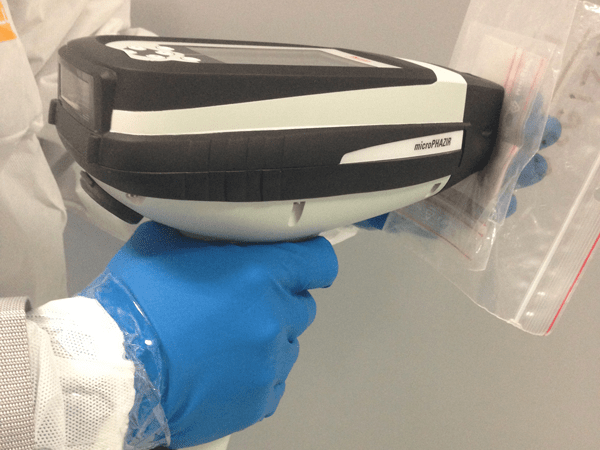The Queensland Government has provided information about the use of near-infrared (NIR) handheld analysers for the identification of asbestos-containing materials (ACM). See photos 1,2 and 3.
Product description
NIR is a spectroscopic method that uses the near-infrared region of the electromagnetic spectrum (from about 350 nm to 2500 nm). Molecules within materials absorb specific wavelengths of NIR light energy and vibrate. The frequency of the vibration is compared to references of the vibration frequency for known materials, allowing identification of the unknown material.
Background
Section 423 of the Queensland Work Health and Safety Regulation 2011 states for analysis of sample:
- A person with management or control of a workplace may identify asbestos or ACM by arranging for a sample of material at the workplace to be analysed for the presence of asbestos or ACM.
- If a person with management or control of a workplace arranges for analysis, the person must ensure that the sample is analysed only by a:
- NATA-accredited laboratory accredited for the relevant test method, or
- a laboratory approved by the regulator in accordance with guidelines published by Safe Work Australia, or
- a laboratory operated by the regulator.
Risk
NIR handheld analysers do not meet the requirements of work health and safety legislation with respect to identifying ACM. The handheld NIR is not an appropriate test method.
There is limited peer-reviewed scientific literature, from manufacturers of NIR handheld analysers or others, to validate claims that the NIR handheld analysers are unequivocal in identifying asbestos in a wide range of materials.
Risk control
The appropriate test method is by polarised light microscopy, including dispersion staining techniques in accordance with AS4964 (2004).




